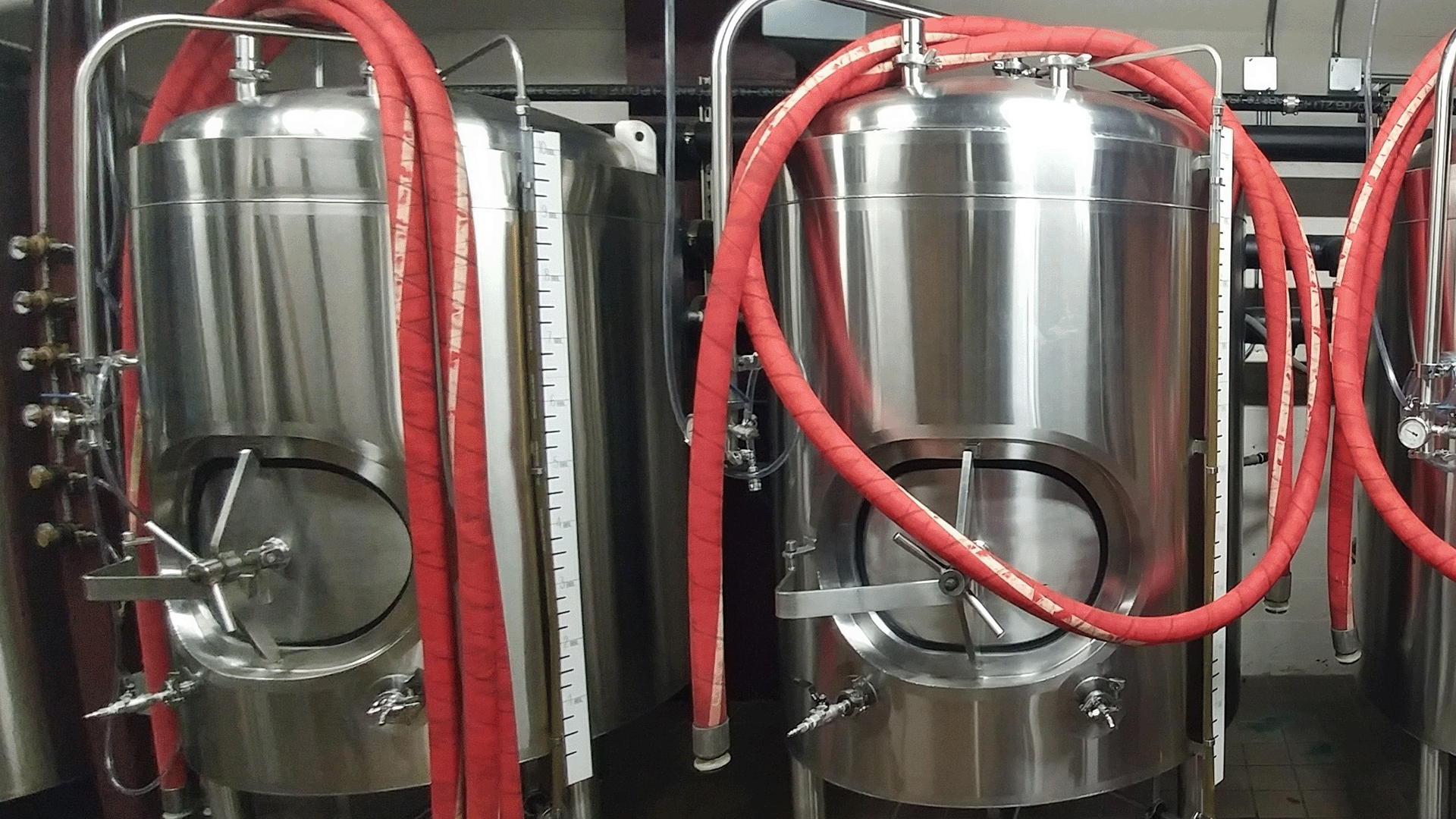In most hygienic production environments, hoses are the arteries of the process line. Among the many hose styles available, rubber sanitary hoses remain a popular work‑horse option thanks to their combination of flexibility, robust mechanical strength, and cost‑effectiveness.
What Is a Rubber Sanitary Hose?
A rubber sanitary hose is a food‑grade or pharmaceutical‑grade hose constructed with an EPDM, nitrile or other elastomeric inner tube, reinforced with textile and/or steel wire, and finished with a smooth, easy‑to‑clean cover.
Industries That Rely on Rubber Hoses
- Food and Beverage: Bulk transfer of juices, sauces, syrups, dairy products and more. One of our most popular hoses for food and beverage processing is the Novaflex FDA Food Transfer Hose Assembly (FTH).
- Breweries or Wineries: Hot‑wort transfer, must handling, cellar racking and bottling operations. Our brewing customers prefer the Brewery Transfer Hose (BTH).
- Pharmaceutical: Non‑critical media transfer, buffer preparation and waste handling.
- Personal‑Care & Cosmetics: Viscous creams, gels and lotions that need gentle handling.
- Industrial CIP or Wash‑down: Hot‑water or caustic cleaning lines that demand abrasion resistance.
How a Sanitary Facility Uses Rubber Hose
Inside the plant, rubber hoses excel wherever moderate temperatures, frequent movement or vibration are present:
- Tank Unloading & Loading: Flexible connections between storage tanks and fixed piping.
- Suction & Discharge Lines: Pump inlets/outlets handling viscous or particulate‑laden fluids.
- Filling & Packaging: Quick hose change‑overs reduce downtime between product runs.
- CIP Chemical Transfer: Compatible EPDM tubes carry alkaline or acid detergents safely.
Key Benefits of Rubber Hoses
- Exceptional Flexibility: Tight bend radii fit crowded production floors better than rigid piping.
- Abrasion & Impact Resistance: Thick covers protect the reinforcement when dragged across floors.
- Thermal Shock Tolerance: Withstands repeated hot‑water wash cycles without cracking.
- Vibration Damping: Absorbs pump pulsations, reducing stress on welded pipework.
- Cost‑Effective: Lower material cost than PTFE or stainless‑braided alternatives, yet durable.
Potential Drawbacks & Considerations
- Clean In Place (CIP) Complexity: A textured rubber core can trap residues if not flushed thoroughly.
- Lower Chemical & Temperature Limits: Not suitable for aggressive solvents or sustained temperatures above roughly 225 °F / 107 °C.
- Permeation & Odor Transfer: Extended contact with aromatic products may require more frequent hose replacement.
- Weight: Heavier than silicone or PTFE hoses, which may influence ergonomic handling.
Selecting the Right Rubber Hose
When purchasing a hose, verify:
- Media Compatibility: Match elastomer (EPDM, nitrile, etc.) to the fluid’s pH, fat content and solvent load.
- Temperature & Pressure Ratings: Review the worst‑case CIP and production conditions.
- Bend Radius & Length: Ensure adequate flexibility without excessive torsion.
- Cover Type: Smooth for easy wipe‑downs, corrugated for extra flexibility or crush resistance.
Need a deeper dive? Our Hose Selection Guide provides an at‑a‑glance comparison of materials and reinforcements.
Next Steps
Ready to buy a new hose or replace an existing hose? Explore our full lineup of rubber sanitary hoses or browse our complete sanitary hose catalog.
Explore Our Hose Customization Tool
We understand that every facility’s needs are unique and that you may need a custom hose that is not offered, “off-the-shelf”. In addition to our rubber sanitary hoses, we offer a Sanitary Hose Customization Tool that empowers you to create a hose tailored to your exact specifications. Choose your preferred end connections, hose style, diameter, and length to ensure the best possible performance for your operation.

